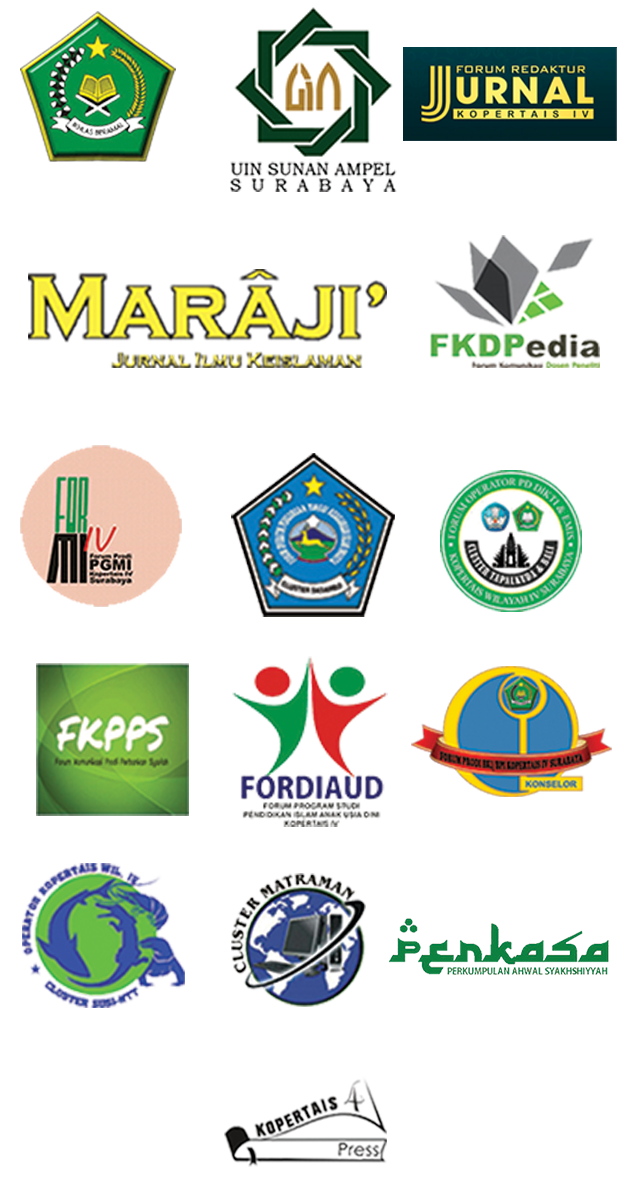Harmonisasi Hukum Adat dan Hukum Agama dalam Perkawinan Adat Masyarakat Osing Banyuwangi
Abstract
This paper examines the harmonization between customary law and religious law in traditional marriages of the Banyuwangi osing community. The contribution of religious law to the existence of customary law is inseparable. With the theory of reception a contrario, a harmonization between the two will be known. The method used in this research is qualitative-descriptive. The approach used is fiqhiyyah rules. The harmonization of customary law and religious law in traditional Bangkat marriages in the Osing Banyuwangi community can be seen from the absence of conflict and intersection between of them so that this Bangkat marriage custom is classified into a urf khas and urf sahih. It’s called Urf khas, because this custom applies to the people of Osing and urf sahih because this custom is not contrary to the Shari'a. Bangkat customary marriages basically show advice and hopes in order to create a happy home life. The form of advice and hope can be seen from the symbols of the tools used at customary times, namely sewur which means someone when choosing a mate, which in Islam is stated to be seen from the side of kafa'ah (wealth, lineage, beauty, and religion). Then the obligation to provide a place to live and provide a living by the husband to his wife as mentioned in Islam, in the Bangkat custom is reflected in the cingkek, bokor, bantal and kloso. Islam also teaches to give some of their sustenance to charity, in the Bangkat custom it is reflected in the coins from the kosekan that are given to people who are present at the Bangkat wedding ceremony.
Downloads
References
Nurtjahjo, Hendra, Legal Standing Kesatuan Masyarakat Hukum Adat (Jakarta: SalembaHumanika, 2010).
Zaydan, ‘Abdul Karim, Al Wajiz fi Ushul al-Fiqh, (Beirut: Mu’assasah al-Risalah, 2001).
Lukito, Ratno, Tradisi Hukum Indonesia (Yogyakarta: Teras, 2008).
Wulansari, Dewi C, Hukum Adat Indonesia Suatu Pengantar, (Bandung : PT Refika Aditama, 2010.
Yulia, S.H., M.H, Buku Ajar HUKUM ADAT, (Lhokseuŵawe: UNIMAL Press, 2016).
Syarifuddin, Amir, Ushul Fiqih, cet. 5, (Jakarta: Kencana Prenada Media Group, 2009).
Zuhayli, Wahbah, Subul al-Istifadah min al-Nawazil wa al-Fatawa wa al-Amal al-Fiqhy fi al-Tathbiq al-Mu’ashirah, (Damaskus: Dar al-Maktabi, 2001).
Habiburrahman, Rekonstruksi Hukum Kewarisan Islam di Indonesia, (Jakarta: Kencana, 2011).
Rosyadi A, dan Rais Ahmad., ed. Formalisasi Syari’at Islam dalam perspektif Tata Hukum Indonesia, (Bogor: Ghalia Indonesia, 2006).
G. Drewes, Snouck Hurgronje and The Study of Islam, dalam Bijdragen tot de Taal, Vol. 113 (1957), No. 1.
Yunani Hasan, Politik Christian Snouck Hurgronje Terhadap Perjuangan Rakyat Aceh, dalam Jurnal Pendidikan dan Kajian Sejarah, Vol. 3 No. 4 Agustus (2013)
Wagianto, Ramdan, Tradisi Kawin Colong Pada Masyarakat Osing Banyuwangi Perspektif Sosiologi Hukum Islam, Jurnal Al Ahwal, 2017.
Sudantra, I Ketut, Nyoman Gede Narendra dan I gusti Ngurah Sudiana, Perkawinan Menurut Hukum Adat Bali, Udayana University Press, Denpasar, 2011, hal vii
M . Khoirul Hadi al Asy ari dan Nur Farada Sugihartini, Religion and Culture, 2019
Copyright (c) 2022 RAMDAN WAGIANTO

This work is licensed under a Creative Commons Attribution-ShareAlike 4.0 International License.









